THE SAFETY NET
IT’S ALWAYS SAFETY FIRST.
CONSULT • DESIGN • ENGINEER • CONSTRUCT
MAY 2024 VOLUME 18 ISSUE 05
Complete Spring Cleaning and Safety Guide
02.22.24 | Safeties

After hibernating all winter, the first hint of warm air is the best way to wake up. But the coming of spring isn’t all birds and bees. Allergies, pests, and afternoon yard work are just around the corner.
SAFE T Y FIRST
Austin employees have worked 7,531,479 hours without a Lost Time Accident through 04/2024.
Streamline your work with spring cleaning safety tips on cutting the clutter, disinfecting your home, safety testing, and emergency preparation.
SPRING CLEANING SAFETY TIPS
• Declutter and disinfect
• Start yard work
• Test home safety alarms
• Make an emergency plan

1. DECLUTTER AND DISINFECT
Things tend to accumulate over the winter. Once spring rolls around, it’s time to take care of the left-out holiday decorations and piles of sweaters. Clutter can collect dust, which causes allergies. Here’s how to get started.
CLEAN OUT THE ATTIC OR GARAGE
It sounds like a daunting task, but spring is the perfect time to clear the dust off the storage areas of your home.
Start by untangling and sorting nests of cables and extension cords. You probably don’t need a dozen phone chargers anyway. For the ones you don’t want to keep, look for an e-waste recycling center near you . Chargers, cables, and cords can add to pollution and be hazardous when burned.
For everything else, create piles of things you want to dump, donate, or keep. This process thins out the clutter and uncovers items you forgot you loved.
RESTOCK CLEANING SUPPLIES
Check under your sink and replace any old household cleaners and rags you don’t need. Items like unscented bleach, white vinegar, and fresh sponges are great additions to your home arsenal.
If you want gentler cleaning products, ingredients like olive oil, vinegar, and lemon juice combine to create nontoxic
home cleaners. But you need to bring in the heavier chemicals like bleach to truly disinfect your home. If you use bleach, do not mix it with any other chemicals.
CLEAR THE AIR
Cleaner air means fewer itchy eyes, runny noses, and sneezes in your home. Crank up the air purifier, vacuum, dust, and wash linens regularly to break up dirt, pollen, and dander.
Replace your HVAC air filter and clean the vents throughout your home to remove dust. If you have floor vents, pets, or allergies, consider hiring a duct cleaner to get all the dust bunnies out of your ductwork.
Household mold, including black mold , is also a prime suspect when it comes to spring allergies. If you come across moldy spots in your bathroom, under the sink, or around windows, clean them up quickly to avoid any further problems.
DISINFECT YOUR HOME
Between winter colds and spring allergies, there might be a lot of sneezing in your house. Keep the bugs under control by deep cleaning your home.
Start by disinfecting hard surfaces like countertops, doorknobs, faucets. Commonly touched areas like these should get a thorough cleaning to avoid spreading germs. Clean toys, games, and electronics too, especially ones your kids use often or share with siblings and friends.
We recommend using a bleach solution or nontoxic household cleaners like hydrogen peroxide when you can. Or, learn about effective natural cleaners
You don’t need much bleach to make a solution that will disinfect the hard surfaces in your home. But we recommend changing the recipe based on what you’re cleaning.1 Use gloves when handling bleach solutions, and be sure to open a window or vent. And NEVER mix bleach with ammonia or vinegar.
HOW TO MAKE A BLEACH SOLUTION
TYPE OF SURFACE
• Food contact surfaces
• Changing stations
SOLUTION RECIPE
• Bathroom
• Kids’ rooms surfaces
• 1 tablespoon bleach : 1 gallon of water
• 3/4 tablespoon bleach: 1 gallon of water
• Soak for five minutes and air dry
2. START YARD WORK
You don’t have to be a gardener or hardcore DIY-expert to make your yard safer and more fun this spring. As the winter chill thaws away, there are a few things you can do to make sure your home is in good shape for spring and summer.
CLEAN THE GUTTERS
Your gutters and roof may have weathered some damage after a season of snow and ice (check out our winter safety guide ). Even if you live in a warmer climate, your home’s drainage system could have clogs from leaves or sticks. Wash out all the debris and unclog your drains and downspouts to make room for the coming spring showers.
START SOME PLANTING
Even novice gardeners can get started on their yards in spring. Early spring is the best time to plan your flower and vegetable gardens. With the warm weather, you can till soil, plant bulbs and seeds, and weed any growth that started over the winter.
PREPARE FOR PESTS
You aren’t the only one coming out of hibernation in spring. As the weather warms up, pests become more active. Thankfully, there are a few ways to keep the bugs at bay.
• Seal and stain the boards on your deck or porch if you have one. Wood treatment can help keep pests from making your deck dinner.
• Check any window and door screens for tears or loose ends that mosquitos, flies, or beetles could use to get inside.
• Remove any standing water in your yard or garden too. Pests lay eggs in stagnant water. Birdbaths, buckets, and puddles are prime real estate for mama mosquitos.
CHECK THE SPRINKLERS
Before you know it, warm weather will turn hot, and your lawn may suffer for it. Get a head start by checking your sprinkler system or installing sprinkler heads throughout your property. Run a few tests on warm days to make sure you’re ready for summer.
3. TEST HOME SAFETY ALARMS
It only takes a few minutes to test your home safety sensors. The beeping might be annoying. But making sure they work could save your life in an emergency.
TEST SMOKE, FIRE, AND CARBON MONOXIDE ALARMS
Start by asking for help from a partner, child, or roommate. Tell them to find the furthest possible room in your home and
wait for the alarm to sound. Next, hold down the button on your smoke or CO detector until the alarm sounds. Your assistant should be able to hear the alarm from their post. If they can’t hear the alarm go off, you should change the battery or place an additional device in your home.
4. MAKE AN EMERGENCY PLAN
While it isn’t much fun to think about, creating a safety plan for a natural disaster, pandemic, or other emergency is the responsible thing to do. With just a day or two of planning, you can be prepared for the worst.
CREATE A FIRE DRILL
Sit down with your family and establish a plan for escaping your home in a fire. Establish two routes out of every room in your home, as well as alternatives for anyone with a disability. Choose a rendezvous spot to meet up once everyone’s out. We also recommend setting up two meeting places where your family can meet if you’re separated.
Once you’ve run through the plan with everyone, practice until everyone understands what to do.
GATHER AN EMERGENCY PREPAREDNESS KIT
With warm weather and moisture rolling in this season, areas across the country are preparing for storm season. Tornados and hurricanes can put your home and family at risk. So it’s smart to have an alternative to panicking.
Start by gathering supplies for an emergency preparedness kit , planning an evacuation route, and establishing emergency contacts. Clothes, food rations , and water are essential, but don’t forget items like pet food or medications.

3
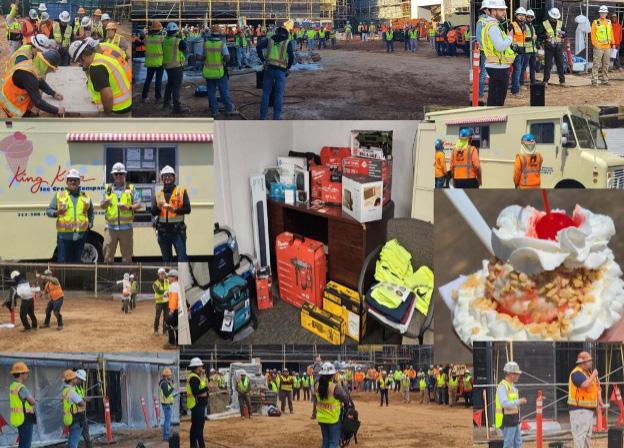
Safety Week May 6th through May 10th
04.01.2024 | JJ Keller Safety Management Suite
DRIVE PERSONAL OWNERSHIP
Recognize the role and responsibility of every individual to own their environment and safety, and the importance of building confidence in every team member.
The safety and success of any construction project is determined by the individual decisions and actions of every team member, the things they see, communicate and act on day in and day out. Each person on the job, regardless of their role, has a deep responsibility for the safety of their entire team, and must commit to always taking initiative when it comes to safety, to own the choices they make and the outcomes that result from those choices. That’s why it’s critical to create an engaging, supportive environment that promotes communication, ownership, and teamwork, where everyone can express their ideas, needs, and concerns without fear of judgment or repercussion, be accountable for their choices and actions, and work together toward the safest solutions and outcomes. Showing trust and confidence in everyone’s ability to get the job done safely and efficiently will build confidence in every team member, in any position, and give them personal ownership and a strong voice in the safety and success of their team and project.
ENCOURAGE AND WELCOME NEW IDEAS
Show that being more inclusive with safety planning, programming and practices leads to deeper trust, respect, unity and understanding within teams.
Our commitment to listening and embracing every voice extends beyond the task at hand. Craft professionals can bring fresh perspective on ways to improve everything from on-site conditions to daily operations to safety processes and practices. Encouraging everyone to participate in safety meetings, pre-task planning, or setting project goals and expectations shows how every individual and voice is supported and valued. By initiating open conversation, sharing ideas and suggestions, and providing constructive feedback, we can improve our communication, our team dynamic, and our culture. This not only strengthens trust and respect within teams, it also ensures every individual fully understands why things are done a certain way, why it should matter to them and why their role is important to the outcome. In an inclusive, collaborative environment, we have the opportunity to tap into everyone’s full potential, to create alignment around decisions and direction, and alliance in the shared responsibilities among everyone in the workplace.
EMBRACE EVERY VOICE
Emphasize the importance of listening and accepting what’s communicated in the workplace to ensure every voice is heard and strengthen trust and respect within teams.
Everyone is empowered to use their voice, but voices only matter if they’re heard. It’s one thing to speak up, but another to trust that your team, your supervisors, and your leadership will listen, understand, and embrace your ideas, needs, concerns, and perspective. Embracing every voice doesn’t mean agreeing with everything said, it doesn’t require an immediate solution or response. It’s about listening and accepting what’s being communicated, and recognizing that when it comes to safety, nothing is more important than making sure every team member in every role feels seen, heard, understood, and supported. It’s also important to acknowledge and celebrate each other’s strengths and achievements. Seeing others succeed and
be recognized for their hard work can be a motivating force that leads to increased effort, higher performance, and better outcomes. When we elevate each other’s ideas, innovate and celebrate success as a team, we create a work environment built on mutual respect, trust, and confidence at all levels.
STRENGTHEN OUR CULTURE
Elevate the individual contributions to our collective success in building a stronger safety culture that inspires and impacts the future of our industry.
Building a strong safety culture takes the collective and individual efforts of all levels within an organization. One decision can change an entire project, one incident can change an entire team, one voice can inspire many more that can change an entire industry. And it takes the commitment, determination, and confidence in each one of us to create positive change and a culture that places safety above everything else. It must become what we embrace, practice, and live every day. We are building the future of construction, a future focused on trust, ownership, a motivated and committed workforce, and a safe work environment for all. Where what we think, we share, what we hear, we embrace, what we see and do, we own. Where we are all seen for our unique contributions, respected for who we are as individuals, feel supported in our decisions and actions, and ultimately, proud of the work we do, the company we represent, and the impact we can make in our career, community, and industry for generations to come.
5
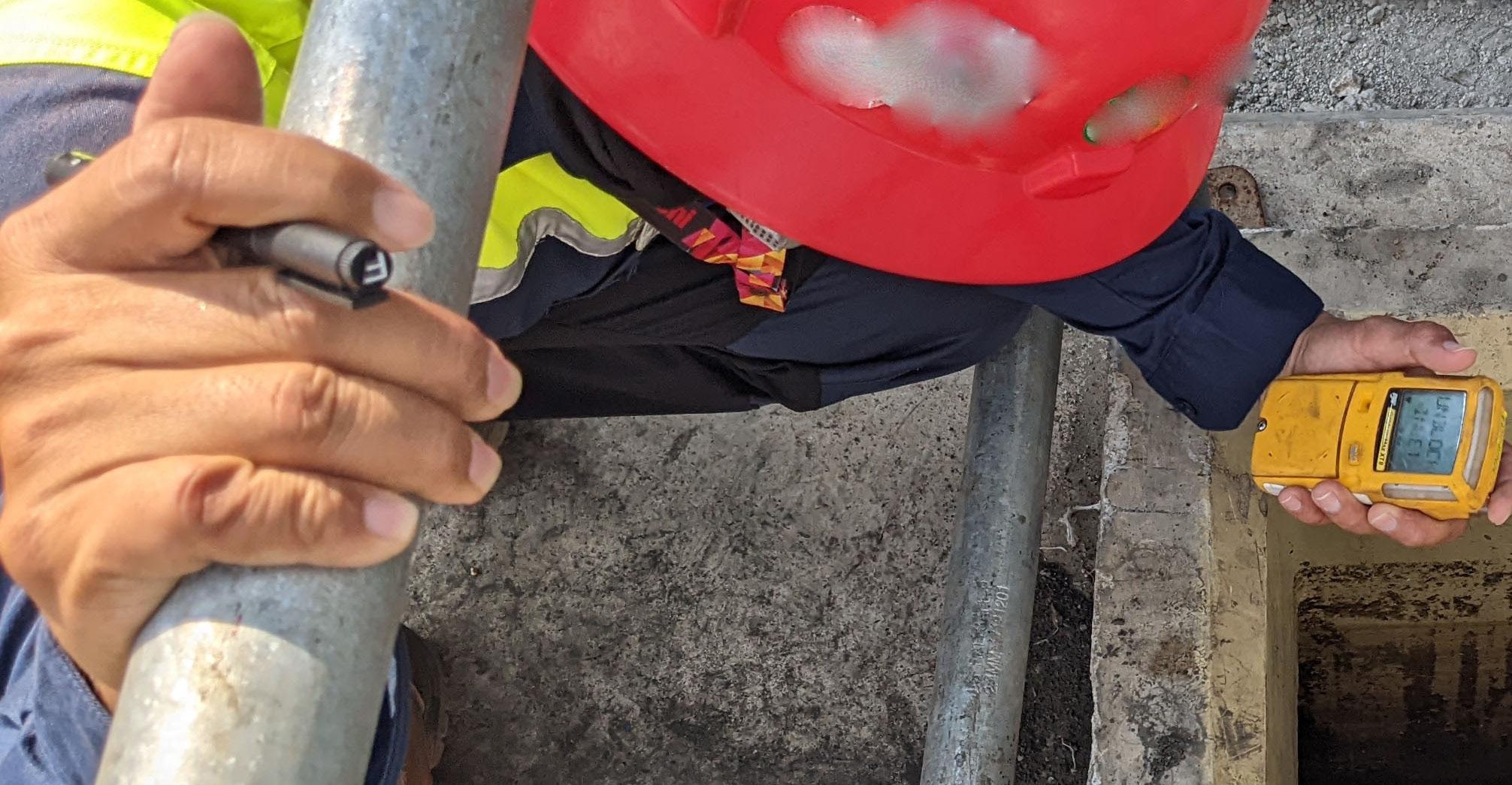
Confined Space Hazards Can Be a Matter of Life or Death
04.01.2024 | JJ Keller Safety Management Suite
A truck washing company was fined nearly $172,000 for two willful and 24 serious violations following an investigation related to the death of one employee and the hospitalization of two others. OSHA inspectors determined the company failed to protect workers from hydrogen sulfide gas as they entered over-the-road tanker trailers to clean them out.
Inspectors found multiple violations of OSHA’s confined space regulations. The company did not:
• Evaluate the workplace to determine if any spaces were permit-required confined spaces;
• Develop a confined space program or procedures necessary for safe permit space entry operations;
• Provide employees with atmospheric monitoring and testing equipment, ventilating equipment, communication equipment, and rescue and emergency equipment;
• Evaluate the hazards of permit spaces before employees entered;
• Provide an attendant outside the permit space during entry operations;
• Designate employees who were to have active roles in entry operations, including attendants and entry supervisors;
• Develop procedures for summoning rescue and emergency services;
• Develop confined space entry permits; or
• Provide employee training.
What’s considered a confined space?
Many workplaces contain areas that are considered “confined spaces” because while they’re not necessarily designed for people, they are large enough for workers to enter and perform certain jobs. A confined space also has limited or restricted means for entry or exit and is not designed for continuous occupancy. Examples include:
• Tanks
• Vessels
• Silos
• Storage bins
• Pits
• Manholes
• Tunnels
• Ductwork
• Pipelines
• Hoppers
Confined Spaces: they’re not necessarily designed for people, they are large enough for workers to enter and perform certain jobs.
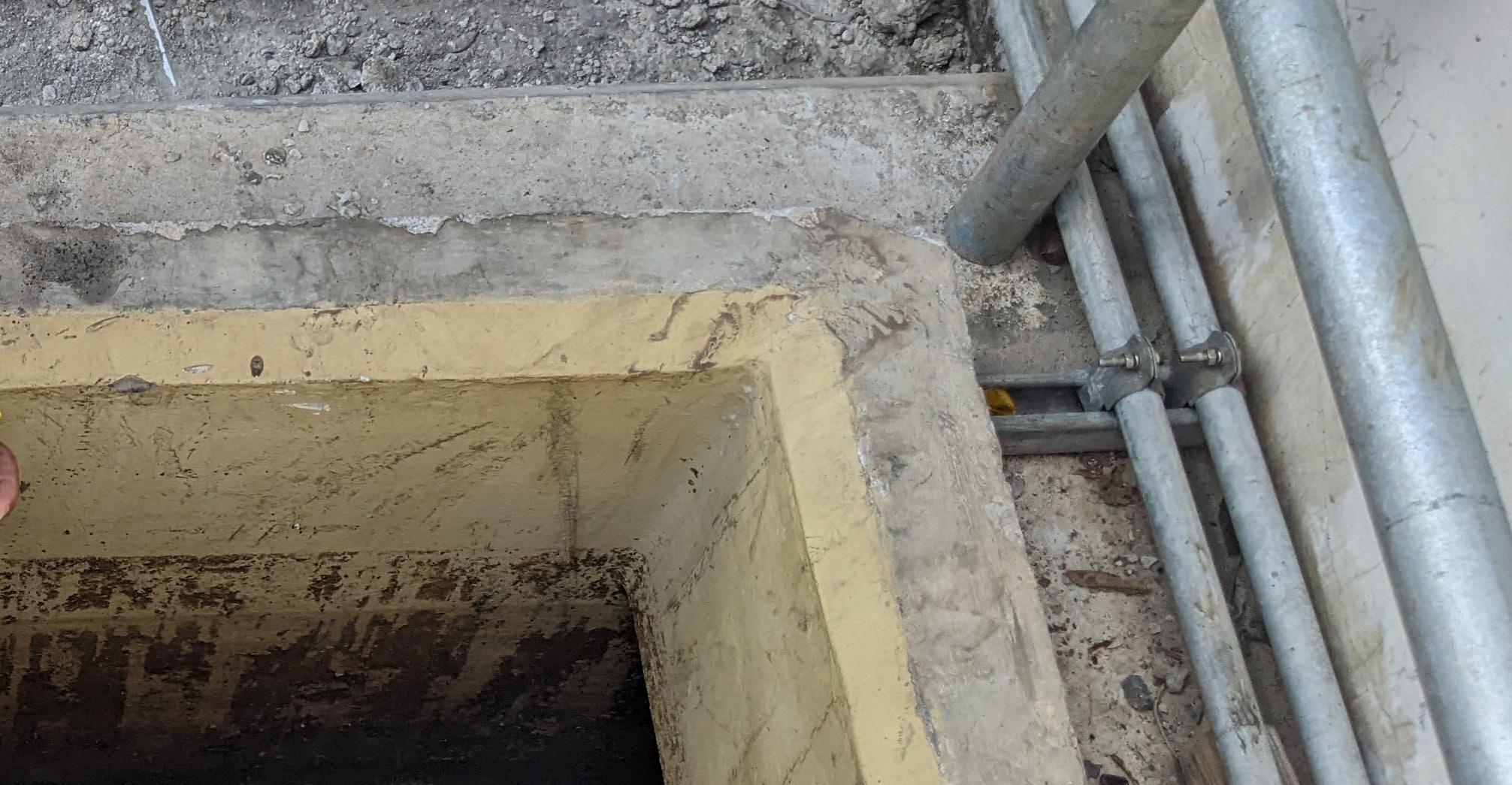
OSHA uses the term “permit-required confined space” (permit space) to describe a confined space that has one or more of the following characteristics:
• Contains or has the potential to contain a hazardous atmosphere;
• Contains material that has the potential to engulf an entrant;
• Has walls that converge inward or floors that slope downward and taper into a smaller area which could trap or asphyxiate an entrant; or
• Contains any other recognized safety or health hazard, such as unguarded machinery, exposed live wires, or heat stress.
WHAT DOES OSHA REQUIRE?
The regulation has numerous requirements to ensure worker safety. Employers must:
• Evaluate the workplace to determine if any spaces are permit-required confined spaces.
• Inform employees of the location and danger of permit spaces by signs or other effective means.
• Either develop and implement a written permit space program or prevent employees from entering permit spaces.
• Evaluate all permit spaces prior to entry.
• Develop a written permit to be completed by the entry supervisor prior to entry.
• Allow entrants or their representative to observe permit space testing.
• Train employees on their duties as entrants, attendants, and/or entry supervisors.
• Only allow entry into permit spaces with a signed entry permit.
• Provide proper personal protective equipment to all entrants.
• Ensure adequate rescue personnel are available for all entries.
• Provide hospitals or treatment facilities with any Safety Data Sheets (SDSs) or other information in a permit space hazard exposure situation that may aid in treatment of rescued employees.
• Ensure unauthorized employees do not approach or enter a permit space.
• Ensure acceptable conditions remain throughout the entry. If entry conditions become unacceptable, entrants must leave the space.
• Retain canceled permits for a year to facilitate a review of the permit space program.
• Coordinate with contractors who may be involved or impacted by permit space entries.
7
Eastern Office Safety Lunch
On April 18th our Eastern office, celebrated Campbell’s – Hanover, PA. For working100,000 manhours without a lost time accident. The Austin project team showed their appreciation with a BBQ lunch and an Austin project t-shirt for approximately 97 employees. This is a great accomplishment. A QA/Safety surveillance was also conducted at the project. No safety issues were noted and the quality of workmanship with all trades was some of the best in the industry.
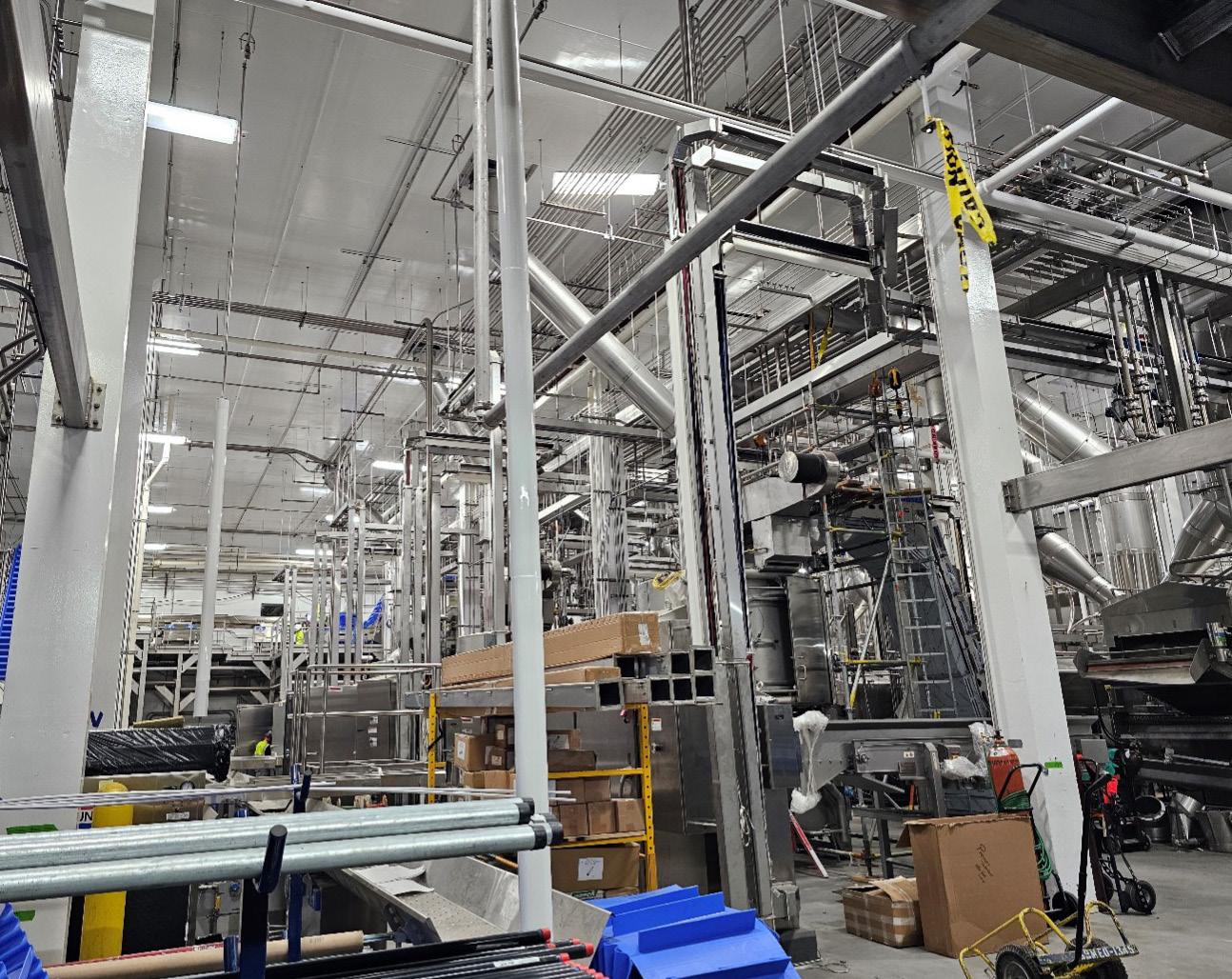

Visit to Leo, SAMT, and Blue Origin


Liberty Mutual conducted a “Risk Assessment” safety inspection on April 18 against our safety program at three (3) of our Florida projects, Leo, SAMT and Blue Origin project.
Liberty Mutual did not identify any safety violation and did not have any recommendations to improve our current program. Congratulations to everyone who participated in this inspection and help make these three projects a success. In addition to the names noted, Mike Vickery, Operations Manager and Dan Guesman, Construction Operations Manager also attended the project walk with Liberty Mutual.
L3 HARRIS PROJECT - LEO PALM BAY FLORIDA
Two photos below:
George Distler Project Manager
Eric Krulisky CSA Superintendent
Jose Socias Mechanical Superintendent
Tommy Vega Asst. Superintendent
Mack Jules Project Engineer
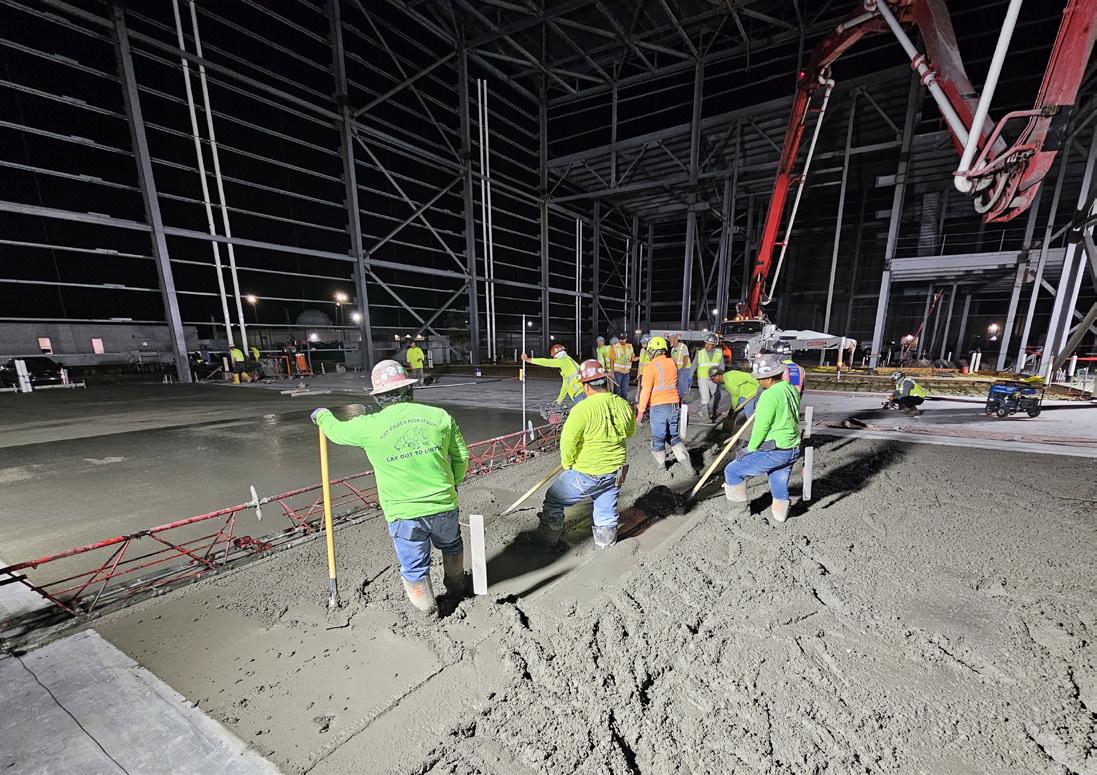
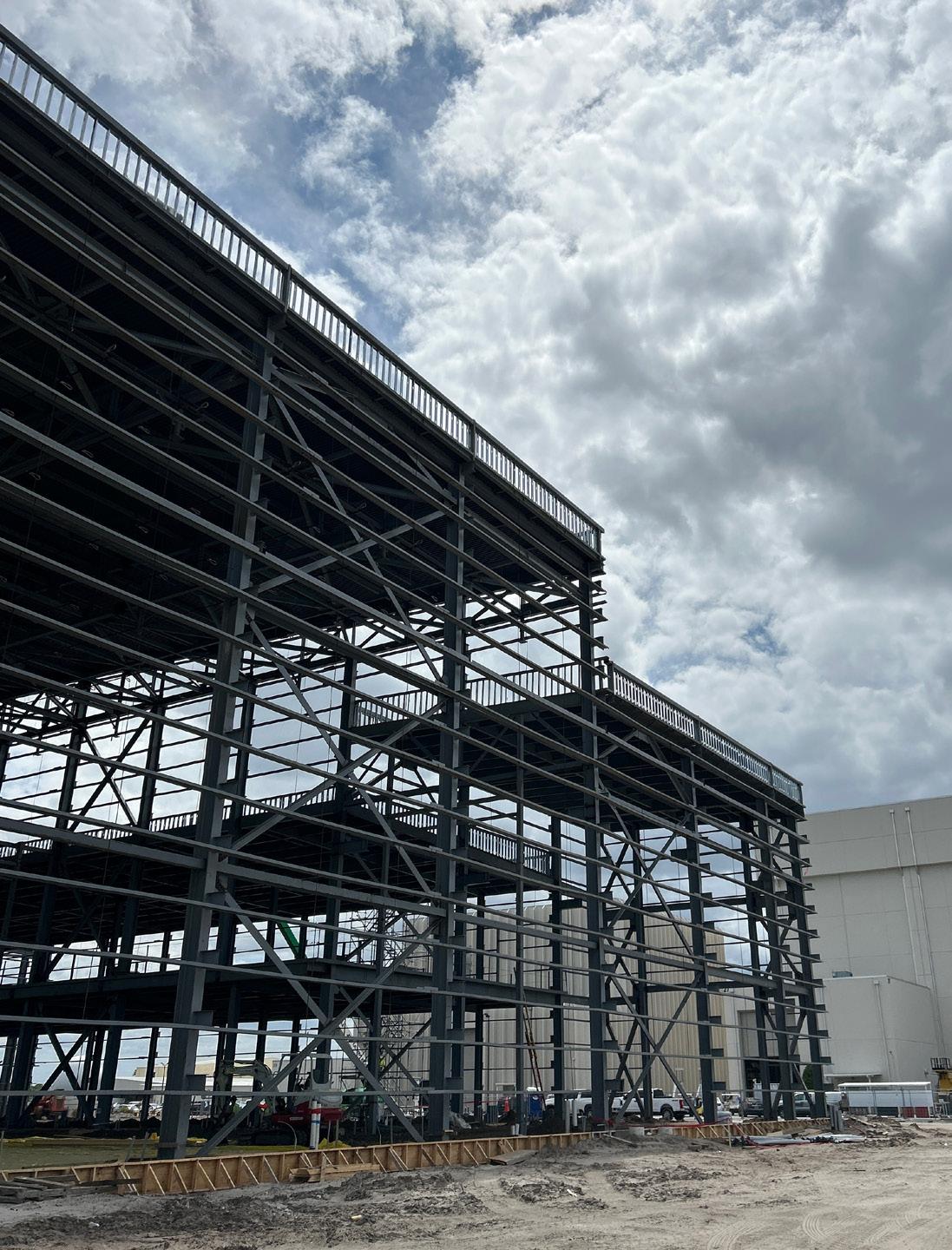
L3 HARRIS PROJECT – SAMT PALM BAY FLORIDA
(NO PICTURES PERMITTED)
Brian Paciorkowski Senior Project Manager
Gregory Hayes Senior Project Manager
Matt Luckett Construction Manager
Juan Hernandez Project Scheduler
Russ Kussack CSA Superintendent
John Czagas Electrical Superintendent
Jose Socias Mechanical Superintendent
John Bueno Asst. Superintendent
Kevin Phillips Safety Manager (Consultant)
Mikeala Morales Project Engineer
Anne Burns Construction Coordinator
BLUE ORIGIN
(NO PICTURES PERMITTED)
Olga Larina Senior Project Manager
Lewis Roberson Construction Manager
Juan Hernandez Project Scheduler
Jeremy Rentschler MEP Superintendent
(Nicholas) Nick Choppe Asst. Superintendent
Leon Walker Safety Manager
(Christopher) Taylor Lunsford Project Engineer
Rene Seeley Construction Coordinator
CAMBELL’S - HANOVER - SPUDNIC
We conducted a QA/Safety inspection at our Cambell’s - Hanover – Spudnic project on April 18, and no discrepancies were noted.
Duane Lofdahl Project Manager
Anton Rozich Project Manager
Prator Helton Field Engineer
Curt Lynn General Superintendent
Tony Goodeaux Electrical Superintendent
Karen Krzywkowski Project Engineer II
Tremaine Thompson Field Engineer
Johnny Ray Helton Superintendent
9


Connecting the Dots Between Construction Safety and Labor Trends
04.19.2023 | Safety Start
These days the job market in the construction industry is different than what we’re used to. The number of available workers in the labor pool has shrunk, employee mobility seems to have skyrocketed, and companies appear to be gun-shy about firing workers.
In a recent article for Occupational Health & Safety magazine titled “Construction Safety in the Atypical Wake of Worker Turnover”, safety columnist Ray Prest takes a look at the labor market for construction jobs and concludes that it could have some major ramifications for organizational safety:
There are substantial safety issues at play. More than ever, job vacancies are filled with folks who are new to the construction industry or to the type of work that your company does. Numerous studies have shown that a lack of experience is correlated with a heightened risk of injuries and other incidents. It also increases the number and severity of human factors in the workplace, as the loss of experienced employees can affect team cohesion and communication, leading to more ambiguity and confusion.
It’s a challenge that is likely to persist into the near future, and the effects on EHS outcomes may be felt for years to come.
Prest notes that the best course of action is, unsurprisingly, to offer a full suite of safety training to new hires as quickly as possible. But that’s not always an option, and it isn’t guaranteed to deal with any issues with safety culture or morale that may stem from labor challenges. Fortunately, there are plenty of other options. These include improving supervisors’ safety capabilities , offering human factors training, focusing more on using workers’ happiness levels to improve safety and generally demonstrating care, as well as implementing low-cost best practices such as construction toolbox talks
The article notes that many of these measures can reduce employee turnover, which will both mitigate the overall problem as well as reduce the expense and effort associated with worker churn. As Prest puts it, “it’s a lot easier, and cheaper, to train-to-retain employees than it is to replace them over and over again.”
Given the pressures the construction industry is facing with hiring, training, and retaining staff (not to mention the looking safety issues that are outlined in the article), it seems like a wise idea to implement measures that do double-duty in staff retention and injury prevention.
11


National Stand-Down to Prevent Struck-By Incidents
04.02.2024 |Weeklysafety.com
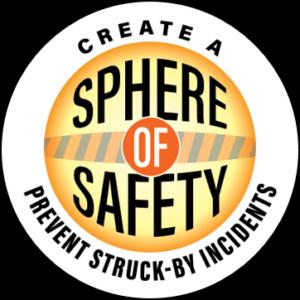
While the National Stand-Down to Prevent Struck-by Incidents is aimed primarily at the construction industry, organizations in every industry are welcome to participate.
The annual National Stand-Down to Prevent Struck-by Incidents is taking place in coordination with National Work Zone Awareness Week.
Struck-by incidents are a leading cause of death among construction workers, and since 1992 the leading cause of nonfatal injuries in the construction industry. According to OSHA, the four most common struck-by hazards are being struck-by a flying, falling, swinging, or rolling object.
The National Stand-Down to Prevent Struck-by Incidents is sponsored by the NORA Construction Sector Council as they have begun undertaking a number of initiatives to increase awareness of struck-by hazards and ways to prevent them.
The National Occupational Research Agenda (NORA ) is a partnership program to stimulate innovative research and improved workplace practices. Formed in 2006, the NORA Construction Sector Council brings together individuals and organizations to share information, form partnerships, and promote adoption and dissemination of solutions that work.
STOP
TALK
ACT
STOP work. TALK about hazards. ACT on what you learn.

The Center for Construction Research and Training (CPWR ) has put together an amazing resource list that companies can access when planning how they will participate in this year’s stand-down.
Available resources include:
• Live webinars that will be hosted throughout the week of the stand-down
• Last year’s virtual events available on-demand along with a PDF of the slides presented
• Work zone safety resources including toolbox talks and infographics
• Lift zone safety toolbox talks and infographics
• Heavy equipment articles and toolbox talks
• Relevant injury and fatality statistics
National Work Zone Awareness Week is recognized the same week as the Stand-Down to Prevent Struck-by Incidents and many organizations will hold training and events that coordinate the messages of both awareness campaigns.
National Work Zone Awareness Week (NWZAW) is an annual spring campaign held at the start of construction season to encourage safe driving through highway work zones. The key message is for drivers to use extra caution in work zones.
For more information and resources on this year’s NWZAW campaign, visit the official National Work Zone Awareness Week website at nwzaw.org that has great materials for this year’s campaign.
A Safety Stand-Down is a voluntary event for employers to talk directly to employees about safety. Any workplace can hold a stand-down by taking a break to focus on “Struck-by Incidents” and reinforcing the importance of Workplace Safety.
This stand-down can be an opportunity for employees to talk to management about struck-by and other job hazards they see, and preventative measures that can be implemented to prevent injuries and incidents.
Companies can conduct a Safety Stand-Down by taking a break to have a toolbox talk or another safety activity such as conducting safety equipment inspections, reviewing what the sphere of safety means, or discussing job specific hazards.
Managers are encouraged to plan a stand-down that works best for their workplace anytime. Decide when to hold the stand-down and how long it will last. The standdown can take place over a break, a lunch period, or at some other designated time.
A stand-down doesn’t have to be boring for the workers. Try to make in interesting and serving snacks is always a good idea! A stand-down should be positive and interactive. Let employees talk about their experiences and encourage them to make suggestions.
If some great struck-by injury prevention ideas came out of the stand-down, consider incorporating those positive changes into the current safety program.
Click the button below to see all the resources available that you can use to during the National Stand-Down to Prevent Struck-by Incidents.
STRUCK-BY RESOURCES
Thanks for being an awesome member and for putting #SafetyFirst! To login to your membership area at anytime to grab a new safety topic or toolbox talk for your next meeting, just go to our homepage at weeklysafety.com and the Login link is at the top of the page.
•
•
13

Employees Can Work Alone, But Should They?
02.26.2024 | JJ Keller Safety Management Suite
Despite a common misconception, OSHA doesn’t say much about whether employees can work alone. A few OSHA rules address the issue, mostly for emergency response situations, interior structural firefighting, or working in permit required confined spaces. In most cases, employers can allow employees to work alone, but that doesn’t mean employers should allow this.
For some jobs, working alone is unavoidable, such as a night security guard. Even so, a guard should have a way to communicate with others in an emergency. OSHA encourages employers to develop emergency procedures and provide communication options (like cell phones) for employees working alone. However, OSHA cannot enforce that recommendation.
For other positions, employers should evaluate the potential risks and determine if someone can work alone without undue risk.
WHAT PROMPTED THE CONCERN?
If you’ve wondered whether a particular employee could safely work alone, you should first evaluate why that concern arose. Questions to consider might include:
• What hazards will the employee face, and what is the likelihood that the employee would need assistance in an emergency? For cuts, scrapes, trips, and minor injuries, the employee might simply call for help using a cell phone. But some risks create the potential for more serious incidents.
THE INDIVIDUAL SHOULD BE TRAINED TO RECOGNIZE HAZARDS AND SHOULD CLEARLY UNDERSTAND THAT HE OR SHE MUST USE CAUTION AND AVOID TASKS THAT CREATE AN UNACCEPTABLE LEVEL OF RISK.
• Did the concern arise because of external threats, such as a lone security guard who could face a violent situation? Or did the concern arise because of job-related hazards, such as working with dangerous equipment?
• Can the employee be given a cell phone or emergency number? Could another employee or manager be oncall, and would the on-call person be able to respond in a timely manner?
Keep in mind that security cameras don’t improve the employee’s safety. If an incident occurred, video recordings might help determine what happened, but cameras cannot prevent an incident from occurring.
WORKING WITH THE WORKER
When a job requires working alone, you’ve presumably selected a responsible and trustworthy employee. The individual should be trained to recognize hazards and should clearly understand that he or she must use caution and avoid tasks that create an unacceptable level of risk.
If certain projects don’t get completed because the employee felt uncomfortable tackling a task, be wary of reprimanding the individual for “not doing the job.” You may be inadvertently encouraging the employee to take greater risks. Instead, ask the employee to explain why the task couldn’t be completed, and try to think of alternative procedures that might get the job done with lower risk.
Establishing a check-in procedure could also be an option. Determine how the worker should check in, with whom, and how frequently (e.g., calling a manager’s cell phone every two hours, or before starting a particular task). In addition, decide on a response if the employee misses a check in. Will the manager visit the site to check on the worker?
Ultimately, the employer must balance the potential risks to someone working alone against the costs of scheduling a second worker, or the costs of taking other measures that could minimize those risks. Those other measures may range from having someone on call to simply delaying certain tasks until additional workers are on duty.
15


Final Rule Issued on Employee Representation at OSHA Inspections
03.29.2024 | EHS Today
“Worker involvement in the inspection process is essential for thorough and effective inspections and making workplaces safer,” said OSHA’s Doug Parker.
On March 29, the Department of Labor announced a final rule (the worker walk-around rule) clarifying the rights of employees to authorize a representative to accompany an OSHA compliance officer during an inspection of their workplace will be published in the Federal Register on April 1.
The Occupational Safety and Health Act gives the employer and employees the right to authorize a representative to accompany OSHA officials during a workplace inspection. The final rule clarifies that, consistent with the law, workers may authorize another employee to serve as their representative or select a non-employee.
For a non-employee representative to accompany the compliance officer in a workplace, it must be reasonably necessary to conduct an effective and thorough inspection.
Consistent with OSHA’s historic practice, the rule clarifies that a non-employee representative may be reasonably necessary based upon skills, knowledge, or experience. This experience may include knowledge or experience with
hazards or conditions in the workplace or similar workplaces, or language or communication skills to ensure an effective and thorough inspection.
The agency said these revisions better align OSHA’s regulation with the OSH Act and enable the agency to conduct more effective inspections. OSHA regulations require no specific qualifications for employer representatives or for employee representatives who are employed by the employer.
The rule is in part a response to a 2017 court decision ruling the agency’s existing regulation, 29 CFR 1903.8(c), only permitted employees of the employer to be authorized as representatives. However, the court acknowledged that the OSH Act does not limit who can serve as an employee representative and that OSHA’s historic practice was a “persuasive and valid construction” of the OSH Act. The final rule is the culmination of notice and comment rule-making that clarifies OSHA’s inspection regulation and aligns with OSHA’s longstanding construction of the act.
“Worker involvement in the inspection process is essential for thorough and effective inspections and making workplaces safer,” Doug Parker, Assistant Secretary for Occupational


Safety and Health, said in a statement. “The Occupational Safety and Health Act gives employers and employees equal opportunity for choosing representation during the OSHA inspection process, and this rule returns us to the fair, balanced approach Congress intended.”
The rule is effective on May 31, 2024.
The National Council for Occupational Safety and Health (National COSH) said on March 29 that the rule “will improve workplace safety and reduce on-the-job hazards, by giving workers the right to a representative of their choice during safety inspections.”
“With a trusted worker representative onsite,” said Jessica E. Martinex, co-executive director of National COSH, “safety inspections can more effectively capture the first-hand knowledge workers have about work processes and potential hazards. A representative selected by workers can also help bridge language barriers and reduce the fear of retaliation, which is often a major barrier in gathering accurate information and about workplace conditions.
However, Linda Kelly, chief legal officer with the National Association of Manufacturers, had a less positive reaction to
the rule-making. The rule, she said in a statement, “does nothing to advance OSHA’s mission of ensuring safe working conditions. Forcing businesses to accommodate third parties with no safety expertise in their facilities infringes on employers’ property rights, invites new liabilities, and introduces elements of chaos and disruption to safety inspections.
“By unlawfully expanding third-party access to manufacturers’ worksites,” she continued, “this proposal clearly violates OSHA’s statutory mandate to conduct inspections within ‘reasonable limits and in a reasonable manner’ with ‘minimum burden’ on employers, and potentially violates manufacturers’ constitutional rights. And, for the first time, OSHA would determine who qualifies as an ‘authorized representative’ of employees, which until now has been exclusively recognized as the jurisdiction of the National Labor Relations Board.”
Kelly indicated that the NAM “will be considering legal action to reverse this incredibly destabilizing decision.”
17
RECOVERY IS KEY RECOVERED
COMPLETELY:
ALL SIGNS AND SYMPTOMS HAVE DISAPPEARED



OSHA 300: New Case or Continuation of a Previous Injury?
02.05.2024
| JJ Keller Management Suite
Suppose an employee had a recordable work-related injury two years ago, with days away after surgery. This month, the employee needs another surgery that will also require days away. Is this a new case or a continuation of the two-year-old injury?
In other words, should the employer create a new entry on the current year’s 300 Log, or update the entry on the 300 Log from two years ago? Note that employers must update 300 Log entries throughout the five-year retention period.
RECOVERY IS KEY
If the employee had recovered completely from the original injury (all signs and symptoms disappeared) and some event or exposure at work caused a new injury to the same body part, then the employer would create an entry on the current year’s 300 Log for the new case. In fact, even if the employee had mostly recovered, but an event at work significantly aggravated the older injury, the employer would have to create a new entry.
However, if the employee had not recovered completely and another surgery is now necessary to address the original condition, the employer can update the 300 Log entry from two years ago with the additional days away.
The regulations define a “new case” at 1904.6(a) , which explains that “recovered completely” means “all signs and symptoms had disappeared” from the previous injury. Determining if the employee “recovered completely” can be challenging. Employees may have discomfort or limitations for years, then require surgery if the condition just isn’t healing.
Conversely, if the employee had any ongoing symptoms, and the employer cannot identify a workplace event that aggravated original condition, the current need for surgery should not be a “new” case. The employer would update the two-year-old 300 Log entry with the additional day counts.
CONTRIBUTING FACTORS
When evaluating possible aggravation of a pre-existing condition, OSHA warns that a workplace event or exposure does not have to be a significant factor, but merely a discernible factor. A Letter of Interpretation dated December 21, 2005 , addressed an employee with carpal tunnel syndrome whose symptoms recurred several years later. Here’s what happened.
After initial treatment of cortisone injections, the employee showed “overall improvement” but did not completely heal. Several years later, after moving to a new position within the company, the employee had a recurrence of carpal tunnel and needed additional cortisone injections. Was this a new case?
The doctor did not believe the new job significantly contributed to the recurrence. However, OSHA said an aggravation could create a new case if the job duties had any contribution, even if the work exposure was not a significant contributor.
Since OSHA could not make a determination, the employer had to evaluate the job duties and ask the employee about ongoing symptoms to determine if this was a new case (a work-related aggravation of a pre-existing condition). Even if the employee had not recovered completely, a significant aggravation from job duties (one that required a change in treatment) would create a new case.
Conversely, if job duties made no contribution at all, and if the employee had ongoing issues (had not recovered completely), then the employer could update the original 300 Log entry from two years previously.
19


























